SUMMARY
This is AI generated summarization, which may have errors. For context, always refer to the full article.
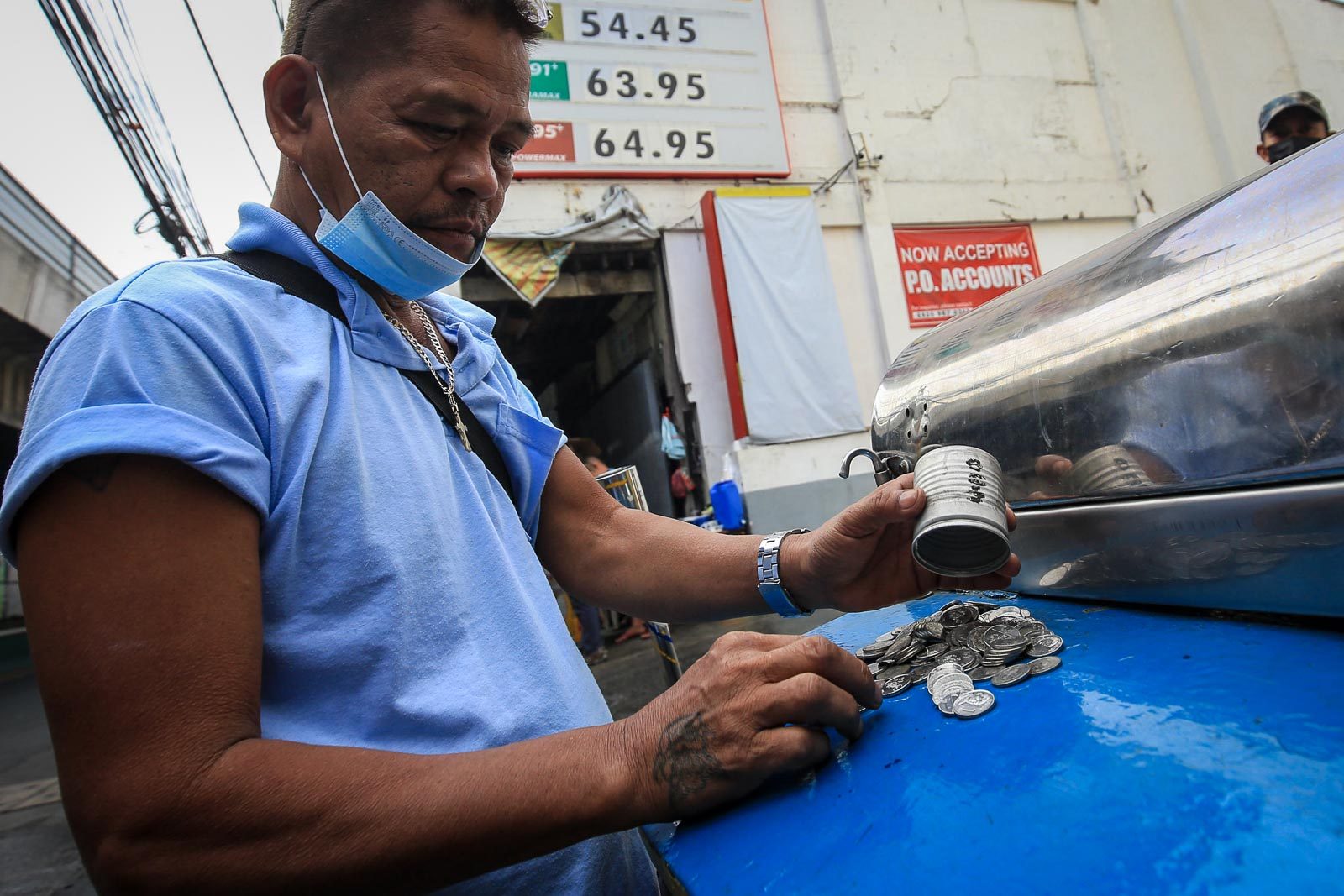
MANILA, Philippines – Jeepney drivers are calling on President Ferdinand Marcos Jr. to honor his promise of support for the transport industry now that traditional jeepneys risk being run off the road.

Danilo Santos, a jeepney driver who has been plying the Pateros-Guadalupe route for more than 26 years, said that he voted for Marcos with the hope that his livelihood would be secure – only for that hope to once again be broken.
“Noon pang panahon ni Duterte ‘yan. Sinusulong na nila. Tapos ito, noong maupo nga si BBM, ganoon pa rin. Binoto namin para kami maano na sa kanila, mabago na, hindi rin pala. Hindi pala kuwan ‘yung sinasabi nila na ‘Pag nanalo si BBM, wala ‘yang phaseout.’ Pero heto na naman,” Danilo said.
(They’ve been pushing for this since Duterte’s administration. And now that BBM’s in charge, it’s still like this. We voted for him so that things would change, but that didn’t happen too. It wasn’t true what they said that ‘If BBM wins, there won’t be a phaseout anymore.’ But here we are again.)
In the run-up to the 2022 presidential elections, Marcos met with leaders of transport groups and promised that a government under him would offer a “decent home” and livelihood programs for jeepney drivers and their families. (READ: Transport factions: Loyalist backs Marcos, activist not buying promise)
During the campaign season, Marcos assured the Liga ng Transportasyon at Operators ng PIlipinas that he would prioritize a bill setting a public transport consumers tax to fund the transport modernization program.
So far, Marcos has not fulfilled these promises.
“Sana intindihin niya kaming mga maliliit, kaming mga driver,” Danilo said. “Sana makarating kay Pangulong Marcos ‘yan saka sa mga taong gobyerno natin na nagpo-post ng hindi nila alam ang kalagayan namin.”
(I hope he can understand those below, us drivers. I hope this reaches President Marcos and those in the government who keep posting messages without understanding our situation.)
Danilo is not alone in his plea. Felix Ronquiniona, another jeepney operator along the Pateros-Guadalupe route, is also worried that traditional jeepneys would soon be totally phased out under the Marcos administration.
“Marami kaming kinakabahan ngayon na mawala ang jeep namin,” Felix said. (There’s a lot of us worried that we’ll lose our jeeps.)
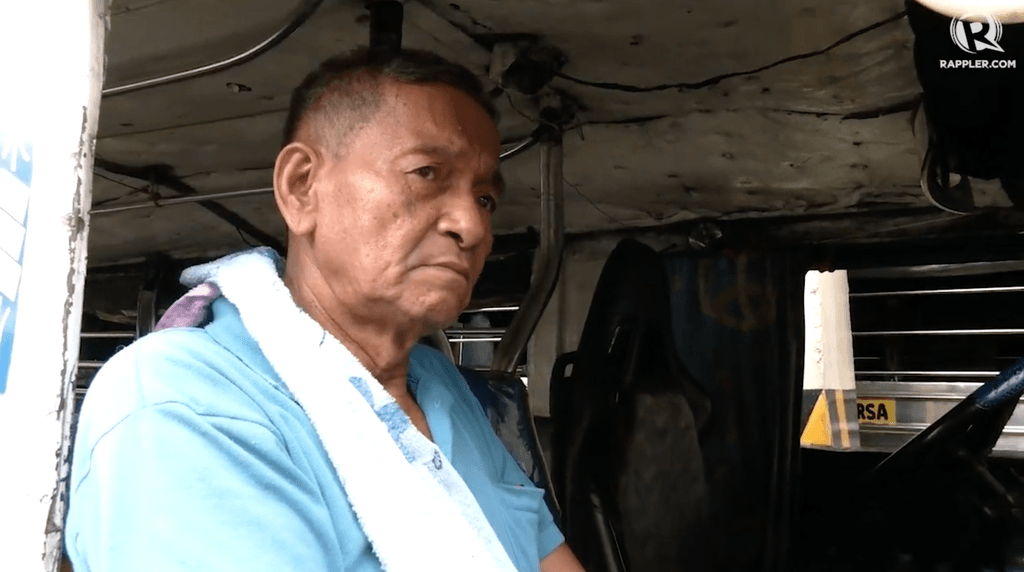
“Ang masasabi ko po sa Presidente natin, sana intindihin kaming mahihirap. ‘Wag na iphase out ang jeep namin,” he added. “Saka ayaw na ayaw namin magkautang. As is na sana. Mr. President, sana po wala ng phaseout, nakikiusap kami.”
(This is what I can tell our President: I hope he can understand us poor folk. Don’t phase out our jeeps. And we really don’t want to get into debt. I hope it can be as is. Mr. President, we’re pleading with you to please not let the phaseout push through.)
Tens of thousands of traditional jeepneys could lose their franchise come June 30 after the Land Transportation Franchising and Regulatory Board (LTFRB) declared that only operators who have consolidated into either a cooperative or corporation will be allowed to operate after the deadline.
The LTFRB asserted that consolidation was a necessary first step in its public utility vehicle (PUV) modernization program, but jeepney drivers fear that the program would eventually phase out their units and require them to buy new modernized jeeps that they can’t afford.
“Sabi nga ng mga anak ko, ‘Eh kasi binoto-boto ‘nyo si Bongbong.’ Eh alam mo naman nakakaintindi siya ng mahirap. Eh kami mahirap lang eh. Sana ‘wag galawin itong aming jeep. Wala kaming pambayad diyan sa mga minibus na ‘yan. Milyon milyon ang halaga niyan!” Felix said.
(My kids told me, ‘Well, that’s what you get for voting for Bongbong.’ But you know that he understands the poor. We’re just poor people. I hope he doesn’t touch our jeeps. We don’t have any money to pay for those minibuses. Those things cost millions!)
High costs, big business
But why do drivers and operators of traditional jeepneys oppose the PUV modernization program in the first place? Their primary concern is the prohibitively high costs that come with modernization.
A traditional jeepney costs around P150,000 to P250,000 – a big sum in its own right, but still far more affordable than modern jeepneys, which operators say cost over P2 million.
“Kukunin mo, P2.5-P2.8 [million]. Kaya bang hulugan dito ‘yon? ‘Yung five kilometers lang ang haba ng linya namin, may mga jeep pa kami na bumibiyahe, sino kukuha ng operator na ganon kalaki ang halaga ng minibus? Mahulugan kaya niya?” Danilo said.
(You’re going to get something that costs P2.5-P2.8 [million]. Do you think they can pay the installments for that? Our route is just five kilometers long, and there are other jeeps along this route too, so what kind of operator will get a minibus that costs that much? Could he even pay for it in installments?)
Danilo said that drivers along smaller routes, like his route along Pateros, only make P2,000 every day. If they were to upgrade to modern jeepneys, he estimated that they’d need to make at least P3,500 per day to pay off their massive loans.
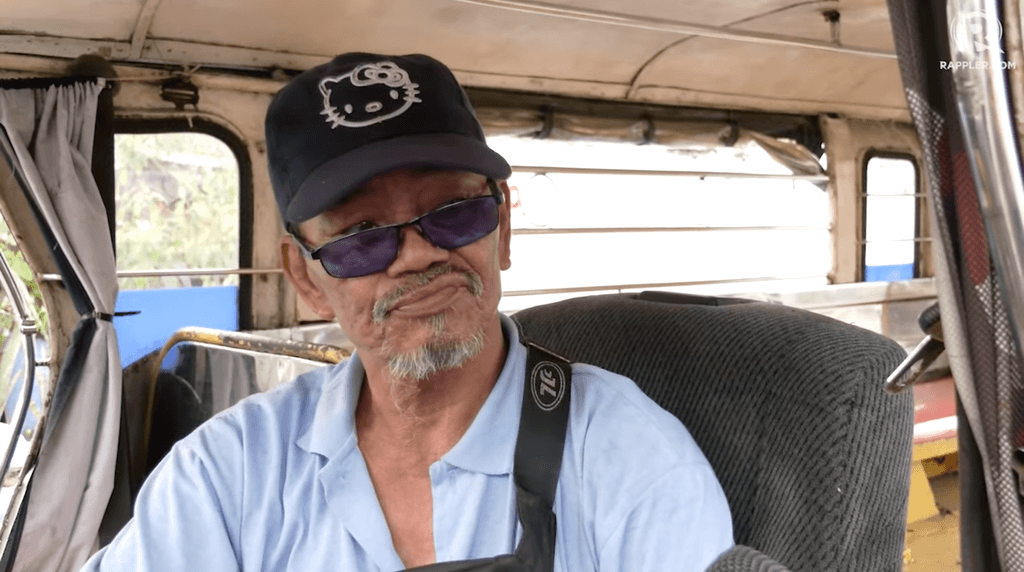
“Sarili mo ‘yung jeep na ganito. Kumikita ka ng dalawang libo, araw-araw wala kang iniintindi. Kukuha ka ng ganon? Eh kamukha ko, matanda na ko – 63 na ako – eh kung kukuha pa ko, mababayaran ko pa kaya ‘yon? ‘Yon ang hindi naiintindihan ng ating gobyerno,” he said.
(A jeep like this is already your own. You can earn P2,000 a day and be done with it. Then you need to get something like that? For someone like me who’s already old – I’m already 63 – if I get that, could I even pay for it? That’s what our government doesn’t understand.)
Under the PUV modernization program, operators who will transition to modern jeepneys can receive a P160,000 equity subsidy for loans. But even then, operators would have to take on millions in debt to make the upgrade.
Jereck, an operator along the Pateros-Guadalupe route, decried how the modernization program would suddenly bury him in debt when he had worked and saved up for years to buy his own traditional jeepney.
“Halimbawa ako operator, wala akong utang, nagkautang ako ng milyon-milyon! Saan naman ako makakakuha ng milyon? Isang kahig, isang tuka na nga lang kami eh,” he said.
(For example, an operator like me who has no debt, I’d suddenly have millions in debt! Where am I supposed to get millions? We’re just living hand-to-mouth here.)
“Pinapanawagan ko sa ating presidente, sana makaunawa kayo. Siyempre ang makikinabang niyan mga negosyante. Paano naman ako, apat na taon akong nag-ipon? Minsan lang ako magkaka-jeep tapos ipephase out?” Jereck said, voice cracking. “Sana mahal na Presidente, pag-isipan mo nang mabuti. Kayo lang ang pag-asa ng taong bayan.”
(I’m calling on our president, please understand. Of course, those who will benefit are the businessmen. What about me, who spent four years saving up? It’s not every day that I can get a jeep, and now you’re going to phase it out? Our beloved President, please think about it well. You’re the only hope of the people.)

Transport group PISTON also argued that the high capital costs of modern jeepneys created a barrier of entry that favored big businesses.
“The compulsory franchise consolidation is an entry point for the corporate capture of small-capacity public transport as only huge corporations have the financial capacity to purchase the required 15 minibuses to operate a single route without being buried in debt,” said PISTON in a statement.
Tycoons have already begun to close in. In 2022, Manny Pangilinan invested P1.5 billion in modern jeepney operator Byahe, which is set to add 500 units to its fleet by 2027. Byahe currently operates in Metro Manila, Pampanga, and Nueva Ecija.
Unsupported modernization
While drivers and operators of traditional jeepneys oppose the implementation of the program, some don’t outright reject the idea of modernization.
Allan Magayang, a jeepney driver along his route in Pateros, is all for modernizing jeepneys – if the government gives drivers and operators the proper support.
“Para sa akin, maganda rin kasi siyempre modernization nga eh ‘di ba? Kaso nga lang mahirap eh, saan kukuha ng finance para mapalitan?” he said. “Parang magigisa ka sa sariling mantika mo no’n eh. Kasi siyempre, magkakaroon ka nga, magpapakahirap ka kasi siyempre babayaran mo ‘yon, samantala kung may sarili kang ganito, wala kang babayaran.”
(For me, it also sounds nice since it’s modernization, right? But of course, it’s hard because how will you finance the upgrades? You’ll be digging your own grave. Yes, you’ll get a new one, but you’ll be burdening yourself to pay all that off, whereas if you already have your own jeep, you don’t have to pay for anything.)
After more than 20 years of plying the roads, Allan is uncertain about the future faced by him and many other jeepney drivers who can’t afford modernized jeepneys. He fears that the government has no concrete plans for those who would lose their jobs.
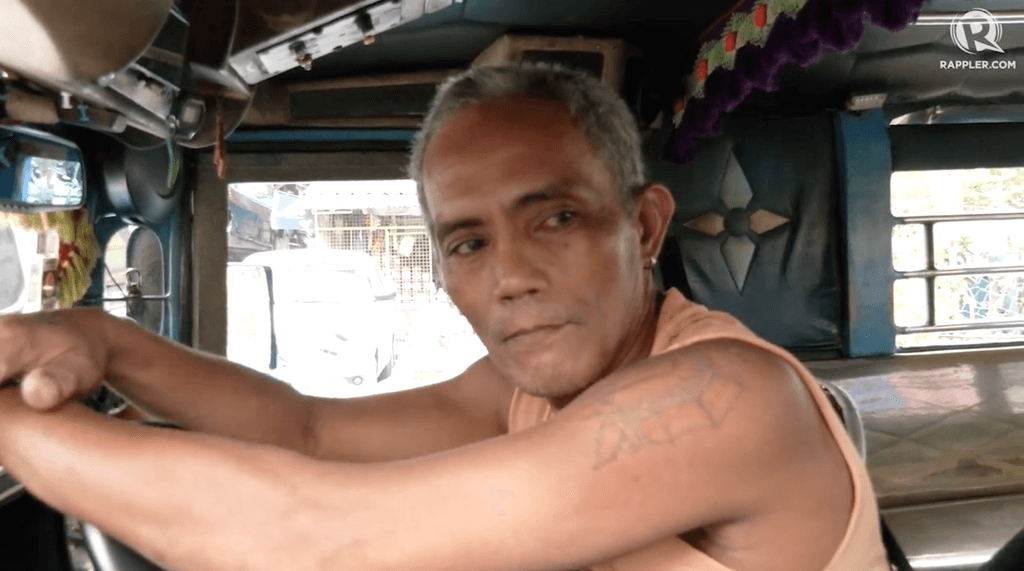
“Halimbawa sa ’kin, halimbawa mawala ako sa jeep, saan naman ako kukuha? Buti kung may maibibigay sa ’kin na ano ‘yung gobyerno natin. Eh wala eh,” he said.
(For example, if I lose my jeep, what do I do to get by? It’d be nice if the government could give us something. But there’s nothing.)
According to the LTFRB, drivers and operators of traditional jeepneys will not be required to immediately change into modern jeepneys.
“Based on the MC [Memorandum Circular] issued by the board, kapag sumali ka [sa kooperatiba o korporasyon], even traditional [jeepney] ka pa rin, you can still continue to operate. Ang ina-address lang muna ng board is the first component, which is the industry consolidation,” said LTFRB technical division head Joel Bolano in a press conference on Thursday, February 23.
(Based on the memorandum circular issued by the board, if you join a cooperative or corporation, even if you’re still a traditional jeepney, you can still continue to operate. What the board is addressing is the first component, which is industry consolidation.)
Bolano said that as long as they are consolidated, operators of traditional jeepneys can still ply their routes until December of this year. Once that deadline comes, the LTFRB may move on to the fleet modernization component of the program.
Asked whether traditional jeeps may still operate after December 31, Bolano said “that’s possible for as long as they will comply with the next policy guidelines that will be issued before the end of December.”
End of the line?
Barring any extensions by the LTFRB, individual operators and drivers of traditional jeepneys have only a few months to go before the June 30 deadline to consolidate.
Romeo, a jeepney driver along the Taytay-Shaw route, has no intentions of joining a cooperative.
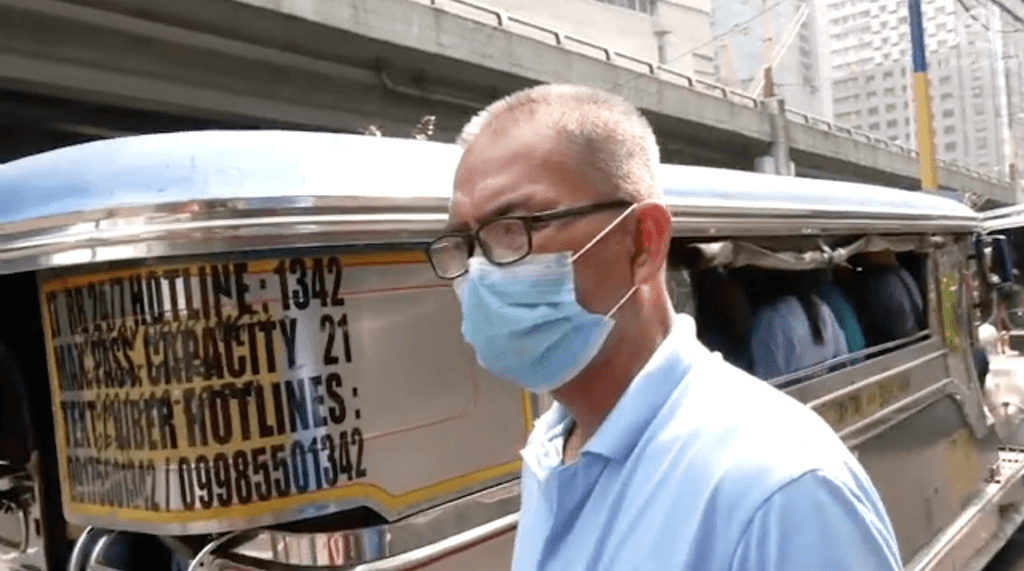
“Sana hindi ganon. Sana ganito rin ang ginawa nila, binigyan na lang ng limit. Halimbawa, 15 years. Kailangan pag 15 years, palitan ng bago, di ‘yung consolidation, mahirap kasi ‘yon eh,” he said.
(I wish it wasn’t like this. I wish they could make it like this, and then they just impose a limit, like 15 years. After 15 years, you need to replace with a new one. Not consolidation, because that’s hard.)
Upon joining a cooperative or corporation, an operator’s jeepney is placed under the name of the entity instead of the individual operator – a loss of control that Romeo dislikes.
“Paano pag nalugi? Paano pag hindi magaling ‘yung humahawak? Malugi ‘yung korporasyon? Talo ka,” he said. (What if they lose money? What if the ones handling us aren’t good, and the corporation goes bankrupt? You lose.)
Forming a cooperative also comes with its own costs. According to the Office of Transportation Cooperatives, jeepney operators must put up P300,000 in paid-up capital. Danilo also said that operators could spend between P20,000 to P30,000 each to comply with other requirements, such as clearing their income tax returns. For a cooperative of 15 operators, that could already cost as much as P750,000.
“Ang daming nawalan ng trabaho, ‘yung mga gumagawa niyan. Tapos kami. Ang dami rin namin,” Romeo said. (A lot of people will lose jobs, like those who make the jeeps. And us. There are a lot of us drivers, too.)
As of February 23, the LTFRB estimated that 61% of the 158,000 jeepneys have consolidated. The board hopes that more would join before June 30, but for some jeepney drivers like Romeo, this is the end of the line.
“Hanggang June na lang ako. Maghahanap na lang ako ng ibang trabaho,” he said, before excusing himself to drive a packed jeepney whose engine still seemed to be roaring with life.
(I only have until June. I’ll look for another job.) – with reports from Lorenz Pasion/Rappler.com
Add a comment
How does this make you feel?


![[Rappler’s Best] Fasten seatbelt, Mr. President](https://www.rappler.com/tachyon/2024/07/fasten-seatbelt-mr-president-edit.jpg?resize=257%2C257&crop=235px%2C0px%2C720px%2C720px)

![[OPINION] Power of mimicry: How human rights are covertly undermined in PH](https://www.rappler.com/tachyon/2024/06/duterte-marcos-human-rights.jpg?resize=257%2C257&crop_strategy=attention)
![[Vantage Point] BBM Year 2: Hits and misses](https://www.rappler.com/tachyon/2024/06/thought-leaders-marcos-hits-and-misses.jpg?resize=257%2C257&crop=277px%2C0px%2C720px%2C720px)




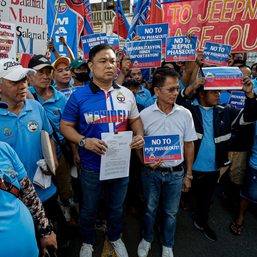



There are no comments yet. Add your comment to start the conversation.